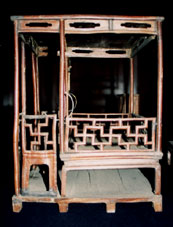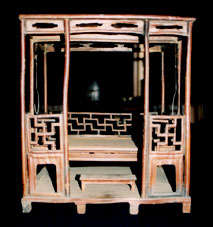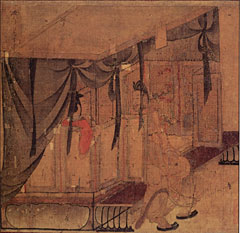 The platform bed was naturally extended with surrounding screen panels or tented awnings to provide nighttime enclosure. The canopy bed is thus characterized by a super structure fitted to the top of the bed, which was enclosed with panels and/or hung with draperies. This room within a room provided private space that was further insulated from drafty quarters.
The platform bed was naturally extended with surrounding screen panels or tented awnings to provide nighttime enclosure. The canopy bed is thus characterized by a super structure fitted to the top of the bed, which was enclosed with panels and/or hung with draperies. This room within a room provided private space that was further insulated from drafty quarters.
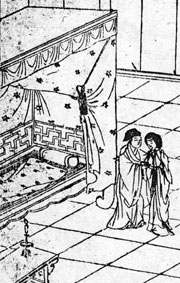
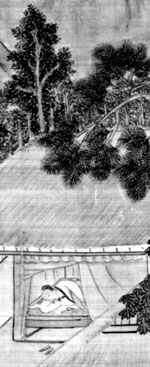
Four-post canopy beds, which were common during the Ming period, were typically draped with fabric around the outside of the frame that suited to the season. Pongee silk or thick cotton provided insulated during the cold winters; gauze netting, provided relief was from annoying insects during the summer without diminishing the refreshingly cool evening breezes. Silk curtains for a lady's bed were often finely embroidered with decorative and auspicious patterns.
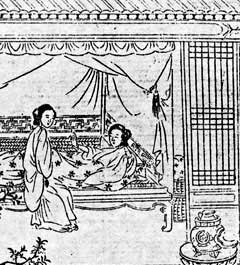 Curtains were drawn back during the day with curtain hooks, and the cozy cubicle continued to be utilized for dining, socializing, and other daily activities.
Curtains were drawn back during the day with curtain hooks, and the cozy cubicle continued to be utilized for dining, socializing, and other daily activities.
Six post canopy beds exhibit a somewhat more architectural style. The curtains were generally hung on the inside of these beds so as to reveal its decorative lattice-work and/or open-carved panels. Those decorated with marble panels were highlyprized during the late Ming period.
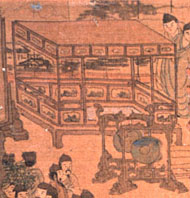

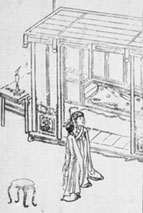 The alcove bed is yet a larger piece of furniture that fits upon base with floor boards. An extension in front provides space for a small table, cabinet, and/or stool. The alcove bed is described in the Ming carpenters manual Lu Ban jing.
The alcove bed is yet a larger piece of furniture that fits upon base with floor boards. An extension in front provides space for a small table, cabinet, and/or stool. The alcove bed is described in the Ming carpenters manual Lu Ban jing.

